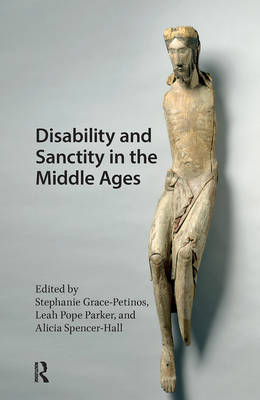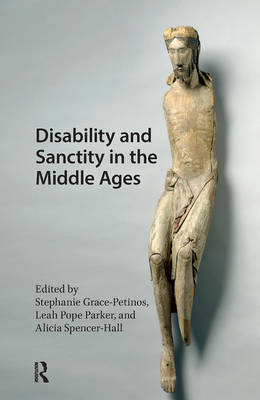
- Afhalen na 1 uur in een winkel met voorraad
- Gratis thuislevering in België vanaf € 30
- Ruim aanbod met 7 miljoen producten
- Afhalen na 1 uur in een winkel met voorraad
- Gratis thuislevering in België vanaf € 30
- Ruim aanbod met 7 miljoen producten
Disability and Sanctity in the Middle Ages
€ 213,95
+ 427 punten
Omschrijving
This volume significantly expands current understandings of both disability and sanctity in the Middle Ages. Across the collection, heterogeneous constructions, and experiences, of disability and holiness are excavated. Analyses span the sixth to the fifteenth century, with discussion of holy men and holy women, Western Christian and Buddhist traditions, hagiographic texts, images, and artefacts. Each chapter underscores that disability and sanctity co-exist with a vast array of connotations, not just fully positive or fully negative, but also every inflection in between. The collection is a powerful rebuttal to the notion of the integral relationship of disability--medieval and otherwise--with sin, stigma, and shame. So doing, it recentres medieval disability history as a lived history that merits exploration and celebration. In this way, the volume serves to reclaim sanctity in disability histories as a means to affirm the possibility of radical disability futures.
Specificaties
Betrokkenen
- Uitgeverij:
Inhoud
- Aantal bladzijden:
- 308
- Taal:
- Engels
- Reeks:
Eigenschappen
- Productcode (EAN):
- 9789463724333
- Verschijningsdatum:
- 28/04/2025
- Uitvoering:
- Hardcover
- Formaat:
- Genaaid
- Afmetingen:
- 160 mm x 238 mm
- Gewicht:
- 616 g

Alleen bij Standaard Boekhandel
+ 427 punten op je klantenkaart van Standaard Boekhandel
Beoordelingen
We publiceren alleen reviews die voldoen aan de voorwaarden voor reviews. Bekijk onze voorwaarden voor reviews.









